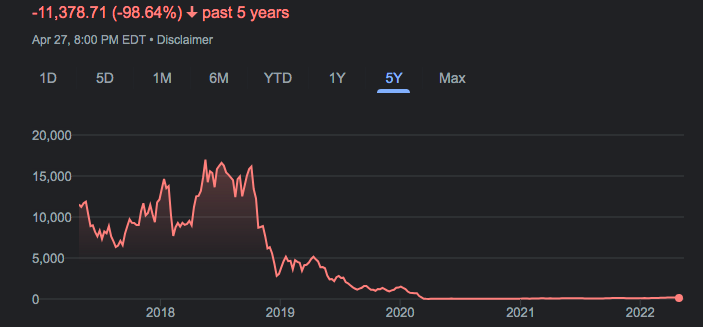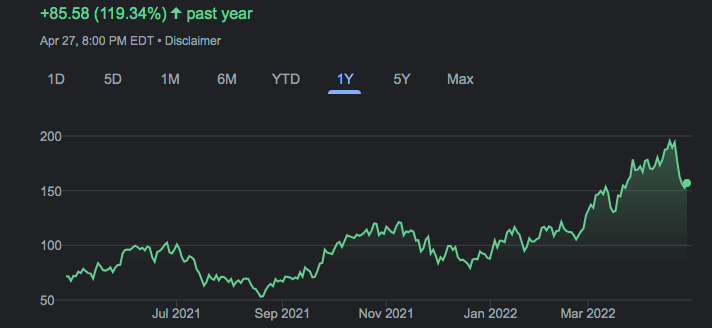Timing is…
Everything.
That’s right.
Timing is EVERYTHING.
When I proposed to my wife – perfect location, the right words, and… perfect timing.
One of our favorite dinners to cook at home is barbecued tri-tip. The key to a great tri-tip? Timing. The right temp, knowing when to flip, how long to let it cook, and the amount of time to let it rest. Again, timing is everything.
Getting that perfect start out of the gate as a swimmer or sprinter – timing. The key to comedy – timing. When to go in for that first kiss – timing.
Investing isn’t immune to the impact of timing either. Timing is such a crucial part of what drives successful investment outcomes. Today we will explore four aspects of investment timing:
- Entry Points
- Holding Periods
- Measurement Time Frames
- Market Timing
The intent of this discussion is to help all of us avoid some of the common timing mistakes and timing misconceptions that all investors face.
So, without further ado…
Entry Points
This past week a client was asking about leveraged ETFs and wanted to get a better understanding of how they work. Some of the advertisements were touting “2x S&P 500” and he just wanted to know if the outcomes were always just twice that of the market. The answer? No. These products are made up of derivatives, futures contracts to be specific. Warren Buffett once described derivatives as, “financial weapons of mass destruction.” Not my feeling exactly, as I believe they have their place, but if misused they [derivatives] can be quite dangerous. Note, the fine print on these leveraged products typically state that these investment vehicles are not intended for holding periods greater than one day.
My client’s real question though hinged on what the worst-case scenario might look like. So, we went to the videotape, I chose an illustration that I thought would best paint the picture for him. We looked at what a leveraged outcome on something like oil would look like – we zoomed in on the oil nightmare that was COVID (2020) and then the dreamiest recent oil outcome being Q1 2022.
Invested 5 years ago, capturing that steep COVID drawdown, one would’ve lost 98% of their money:

Invested 1 year ago, riding that recent commodity spike, one would’ve doubled their original investment:

Source: Google
The moral of the story is that entry points matter, and… timing is everything.
Furthermore, why does this matter to you? Well, we used an extreme example, but it speaks to the idea that the same investment could be trash to one investor and a treasure to another, all depending on when they acquired the investment. Understanding valuations and anchoring today’s price to some sort of reliable historical metric can help from a risk management standpoint; our firm specifically puts a heavy emphasis on current valuations, as we believe this can be a slight edge, putting the probabilities in the investor’s favor.
Holding Periods
It’s almost comical that the leveraged investments we referenced above are noted as being intended for one-day use only, yet many retail investors are using these funds as buy-and-hold instruments. A big part of investment timing is having a clear understanding of appropriate holding periods.
I’ve addressed two client inquiries this week that have a whole lot to do with understanding holding periods: (1) “I have some surplus money I plan to spend in 12-18 months, what would be a good stock to buy?” (2) “Why do we own bonds, shouldn’t we sell them all?” Two very different questions, but with a whole lot of overlap.
High-quality bonds e.g. government treasuries can be a great solution to match an investment/asset to a defined upcoming expense. Stocks on the other hand can be very unpredictable in the short term and a misbehaving stock market can produce unfortunate short-term outcomes.
Let’s use a five-year holding period as an example. Let’s say you plan to make a large new purchase in the next five years, we will say a new home for this hypothetical example. As of this writing, the five-year government treasury sits somewhere in the 2.8% range. In the last 50 years if you were to measure returns of the stock market (S&P 500) in 5 year rolling periods you’d find that nearly 25% of the time the performance for those 5 year rolling periods was less than 2.8%, and nearly 15% of the time those returns were actually negative. Yes, 75% odds are still favorable, but you really don’t want any meaningful chance that your money might be worthless when you need it.
In conclusion, stocks are not appropriate for shorter time horizons (holding periods) and high-quality bonds are the right solution when you need an asset to match up with a short-term liability.
Where do investors go wrong? They set the wrong expectations and they get upset with stocks when they don’t deliver in the short run and become surprised when bonds underwhelm in the long run.
Measurement Time Frames
Do you know what would be silly? Planting an apple seed in the backyard and waking up the next morning expecting to pick apples or putting a cake in the oven and then checking if it’s ready one minute later. Silly, right?
Yet, we treat our investments this way.
We buy an emerging markets fund and then get disenchanted based on the volatility and the first-year results or we allocate to private equity and then get impatient with the pace of how capital is deployed. We live in a culture of instant gratification and it’s hard to fathom that we might actually need to judge some investments based on a full marination period, and that period might be a decade… or it might even be longer.
Your reaction might be, “Poppycock! You can’t expect me to wait that long.” I understand. I really do. That is a long time, BUT that is how compounding works. Do you know what one of Warren Buffett’s best kept secrets is? The fact that he is 91 years old and he started at this investing stuff some 80 years ago; that’s a lot of compounding. And investment returns are lumpy. Results might come in like this – negative, flat, slightly up, slightly negative, flat, up a whole lot. That’s right, sometimes all of your results for a decade might be smushed together in a small period of a few years.
Here’s my advice, with any investment, you should be crystal clear on where you are placing the mile markers – define how often you will measure results and how long of a leash you will give a misbehaving allocation.
Market Timing
This section is simple. I don’t believe that market timing is a viable strategy. I believe you and I have something in common, we are both horrible at timing the markets – knowing when they will peek or when they will bottom. And we each know that we know this, yet we will still become tempted to try. We are tempted to dabble.
Don’t.
Just don’t do it.
I find myself often responding to an investor’s idea or plan with, “Well, isn’t that just trying to time the market?” and the typical reply starts with “Ya, but…”
Let’s make an agreement – right here, right now – no ya-buts. Sound good?
Timing is everything, yet market timing is impossible for us mere mortals.
And That’s It
That’s all I got.
For this week at least.
Those are my thoughts on timing.
Be thoughtful about your entry points, intentional about your holding periods, honest about your time frame for measuring results, and humble in accepting your inability to time markets. Those are the answers to the test. It really is just that simple.
I hope you come back next week for more of my Thoughts On Money.







